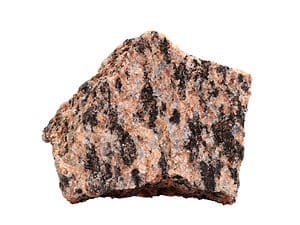This article looks at rare elements and how we use them. Elements are substances made from their own specific type of atoms, and they can’t break down into other substances. Everything on Earth contains at least one element. Some elements are common, but others are rare. Let’s jump in and take a look at the top ten rarest elements in the world.
What Are Elements?
Around 4.5 billion years ago, a supernova explosion created the solar system and all of the elements (up to uranium on the periodic table). The periodic table organizes elements by their atomic number and groups them with others with similar characteristics.
Dmitri Mendeleev created the periodic table in 1869. He knew of 63 elements but hypothesized there were more, so he left gaps for future discoveries. Today, known elements number 118. Who knows? In the future, it might increase again.
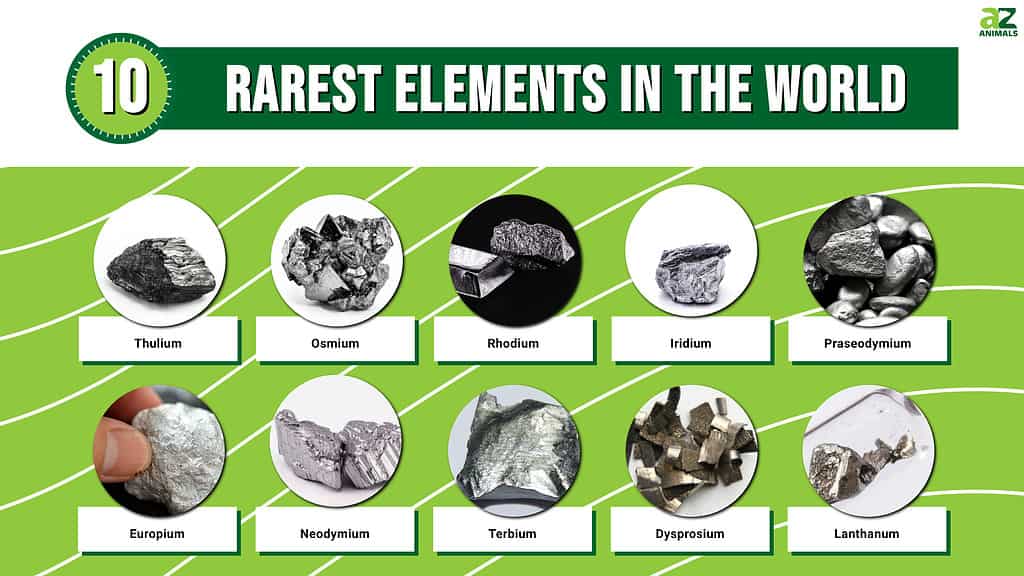
What Does Rare Element Mean?
Rare earth elements are not really rare. For example, the rarest earth element thulium (atomic number 69) is more common than gold.
Their rarity refers to their dispersed nature. Rare earth elements exist across the planet in low concentrations, chiefly in igneous rocks called carbonatites or ores. China produces more than 80% of the world’s rare earth elements. Australia mines relatively few, and in 2015, the last rare earth element mine, the U.S. California Mountain Pass Quarry, closed its doors.
Rare elements are difficult to separate, so obtaining pure elements is difficult and expensive. It is also difficult to recycle rare elements already in use. This adds to their rarity.
Top Ten Rare Elements
Astatine (At) is the rarest element in the world, but it’s a gas and not used a great deal in everyday technology. The top rare elements used in modern technologies are metals, so that’s what we’ll look at today.
1. Thulium (Tm: Atomic Number 69)
The rarest rare earth element, thulium, is a silvery-gray metal. It’s so soft that a knife will slice right through it. Swedish chemist Per Teodor Cleve discovered in 1879 when separating other elements. It’s not found in pure form, but together with other minerals and always in tiny amounts.
Chief uses include X-ray machines, lasers, magnetic ceramics, microwaves, and metal alloys.
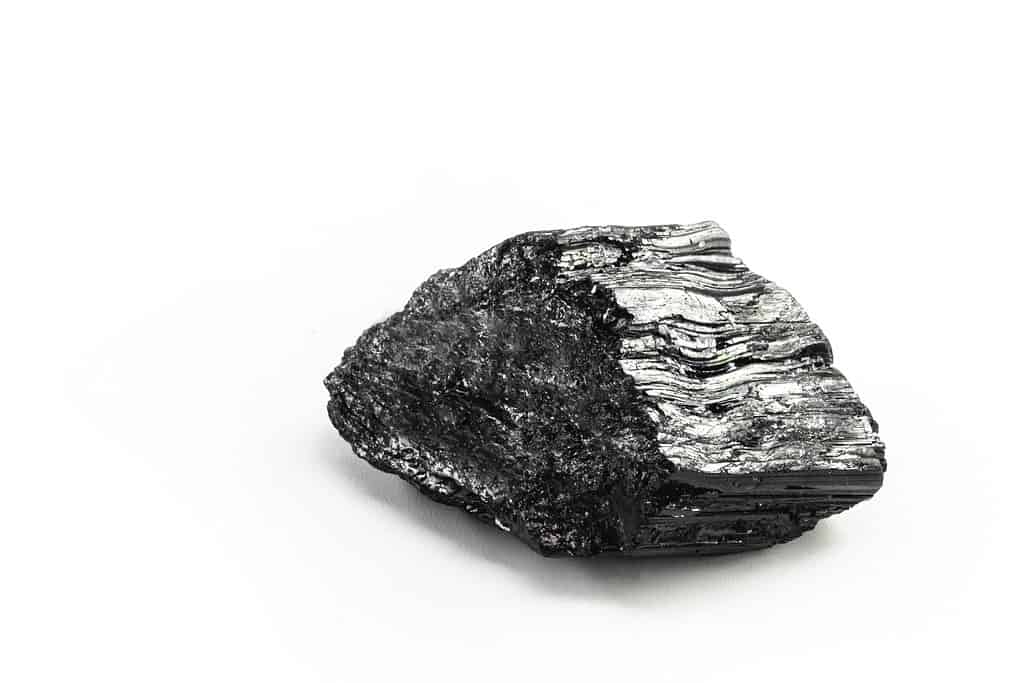
Thulium (Tm) is a silvery-gray metal, the rarest element on Earth.
©iStock.com/RHJ
2. Osmium (Os: Atomic Number 76)
Discovered in 1803 by Englishman Smithson Tennant, osmium is the densest element. Scientists state a brick-sized amount of osmium weighs 56 pounds. Blue-gray metal osmium means ‘smell’ in Greek. Osmium is unaffected by water, air, or acid and is a by-product of nickel refinement.
It’s used to make super hard alloys and high-stress joints such as needles and ballpoint pen tips. It’s also a component of fingerprint technology and pacemakers.

Osmium (Os) is a metallic chemical element belonging to the group of platinum metals that is used in electrical conductors.
©iStock.com/RHJ
3. Rhodium (Rh: Atomic Number 45)
Rhodium is a rare metal element and highly valuable, even more so than gold. It’s a silver-white metal with a reflective surface that doesn’t corrode. Englishman William Wollaston discovered rhodium in 1803 in platinum ore from South America. Rhodium is the rarest of all non-radioactive metals.
Today, rhodium use is chiefly in vehicle catalytic convertors to reduce nitrogen oxide from exhaust fumes. A focus on clean vehicles means rhodium’s value is likely to accelerate in the future.
Rhodium hardens jewelry and alloys and improves rust resistance of high-temperature techs such as furnace windings, glass fiber production, and aircraft spark plugs.
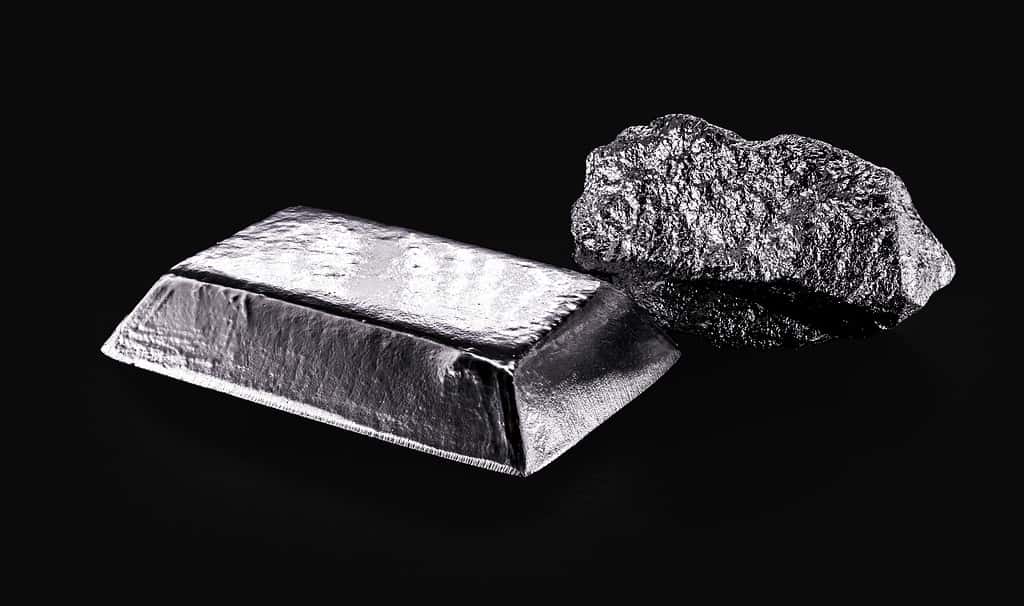
Rhodium is a great resistance to acids and corrosive substances and is used in jewelry. It’s the most expensive metal in the world.
©iStock.com/RHJ
4. Iridium (Ir: Atomic Number 77)
The highest-density element and the most corrosion-resistant is iridium. It’s a white-yellow rare earth element discovered by a group of scientists, including Smithson Tennant, in 1803.
Because it doesn’t corrode, iridium forms standard weight and measurements. It’s also a hardening agent for platinum and is found in electrical contact and optical lenses. On the downside, it is brittle and difficult to work with unless it’s heated first.
Iridium is so rare in its pure form that scientists estimate there are two parts per billion in the Earth’s crust.
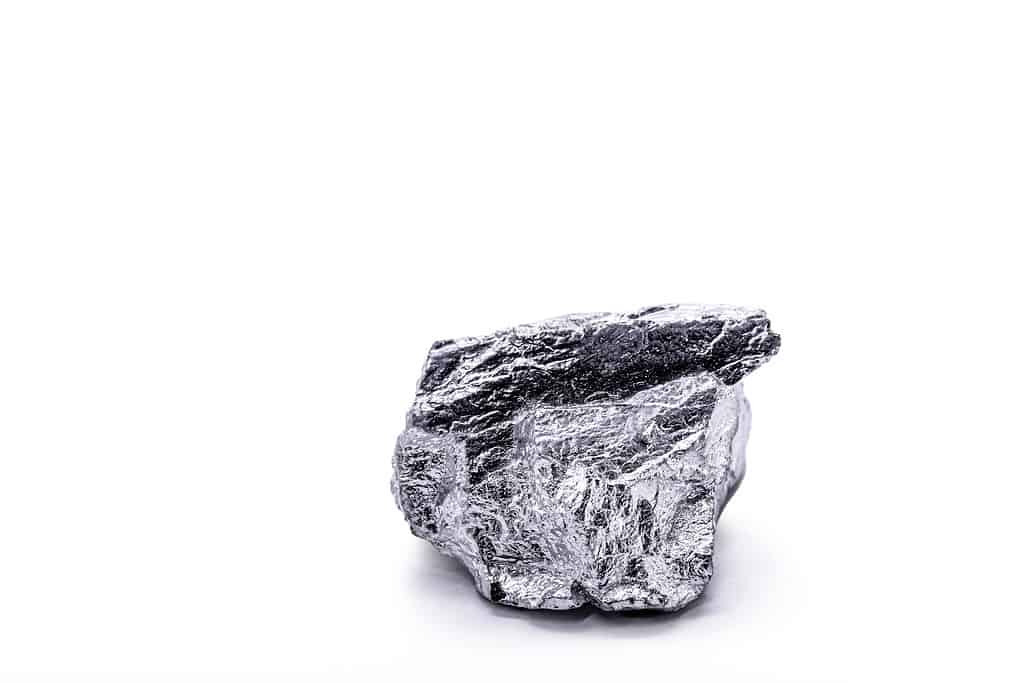
Iridium is used in high-strength alloys that can withstand high temperatures.
©iStock.com/RHJ
5. Praseodymium (Pr: Atomic Number 59)
Because praseodymium (that’s pra-see-oh-dim-ee-em) turns green when it’s compounded with oxygen, its name means “green twin” in Greek. This rare earth element is a soft, yellowy-silver metal that’s slowly reactive with air but reacts quickly with water.
Discovered in 1885, today, praseodymium provides yellow tints in glass and ceramics. It’s a component in permanent magnet alloys and studio lighting carbon arc electrodes. Praseodymium is also an important part of cell phone microphones and speakers.
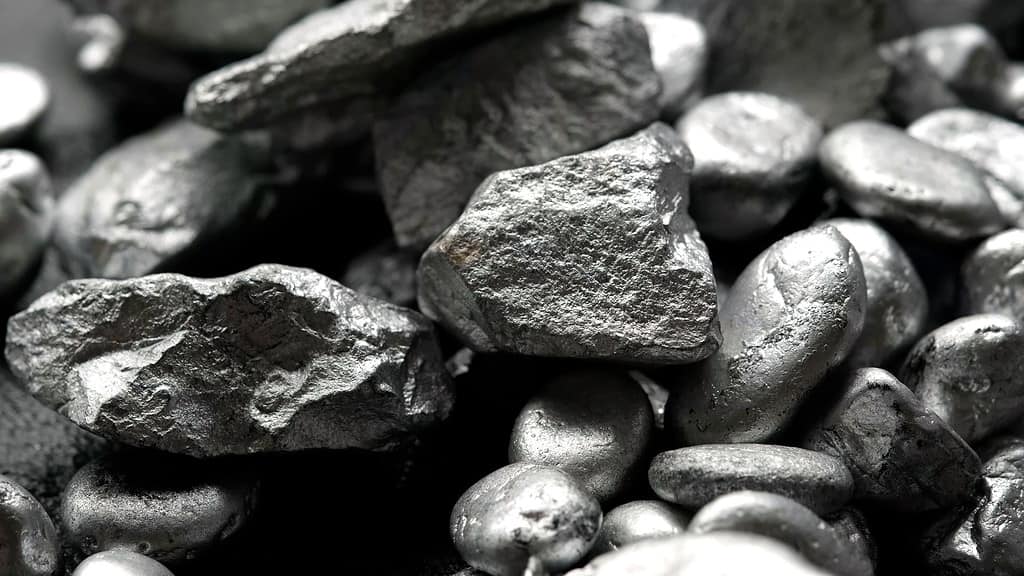
Praseodymium was discovered in 1885.
©iStock.com/Oat_Phawat
6. Europium (Eu: Atomic Number 63)
A latecomer to the periodic table, Frenchman Eugene Demarcay discovered europium in 1903.
It is silvery, soft, and the most reactive of the lanthanides. It reacts quickly with acids, air, and water in a similar way to calcium.
Today, europium is a component of television screens, computer monitors, and smartphone screens (it makes the red shades) and in nuclear rods because it absorbs neutrons.
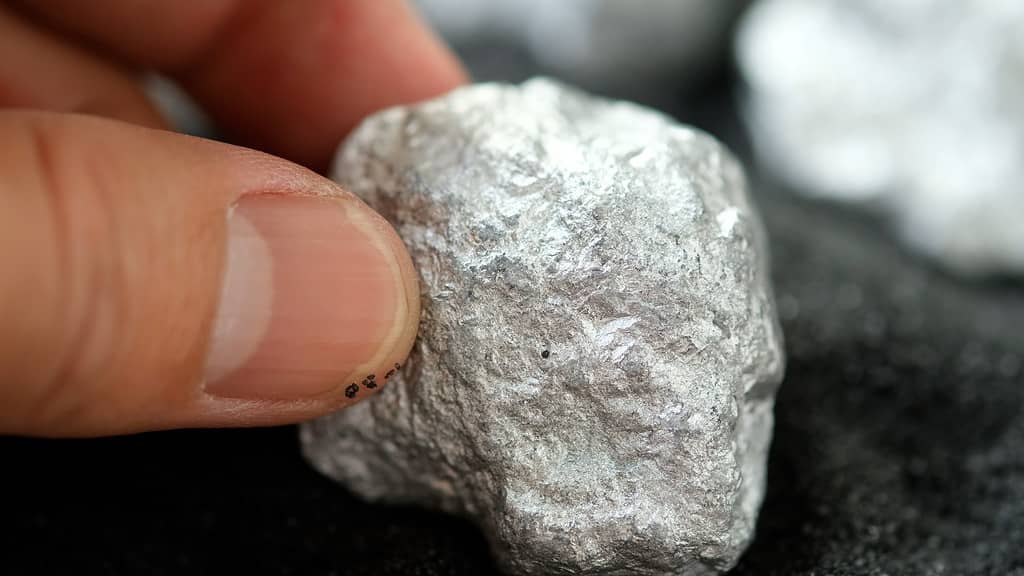
Europium is a silvery-white element.
©iStock.com/Oat_Phawat
7. Neodymium (Nd: Atomic Number 60)
Discovered in 1885 in monazite and bastnasite rocks is neodymium. It’s silvery-yellow and highly reactive with air, water, or acids.
The main uses for neodymium are magnets, welder’s glasses, and lasers that color glass. It’s an incredible spectral filter for astronomical tools and is often used in tanning solariums to filter infrared rays. Neodymium helps power electric cars, cell phone screens, televisions, and rechargeable batteries too.
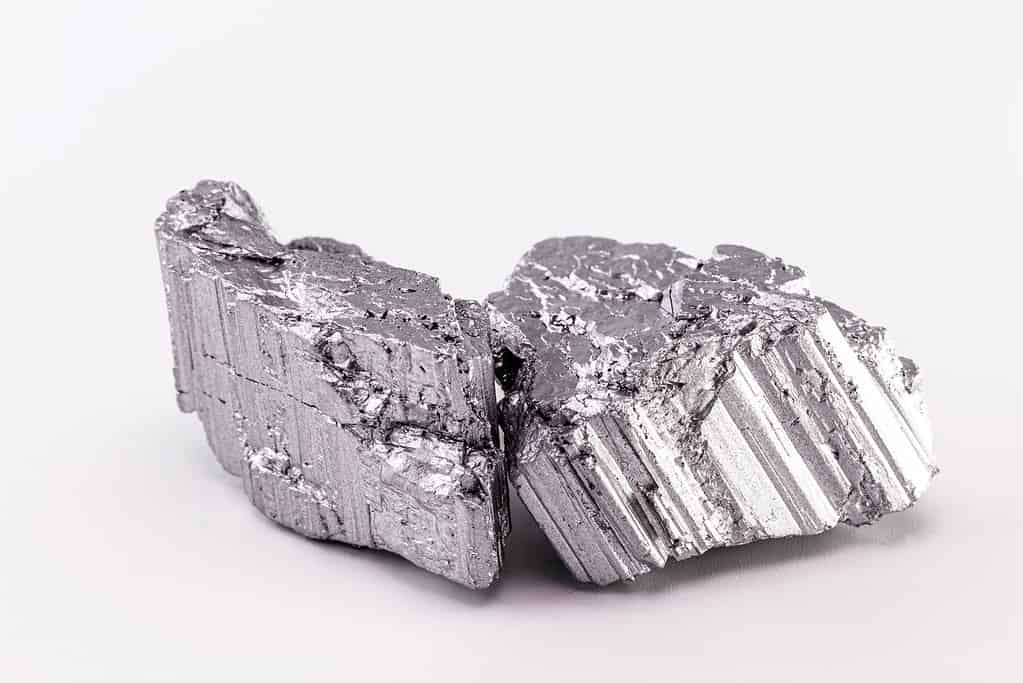
Neodymium stone is the world’s strongest magnetic ore used in the technology industry.
©iStock.com/RHJ
8. Terbium (Tb: Atomic Number 65)
Terbium is gray-silver and easily cut with a knife. This rare element reacts quickly with water and acids but slowly with air. Carl Mosander of Sweden discovered it in 1843.
Today’s terbium applications include cell phone and television screens (where it produces the green shade), semiconductors, low-energy lightbulbs, and lasers. Including terbium in medical X-ray technology improves its safety by producing top-quality images with short exposure times.

Today’s terbium applications include cell phone and television screens, semiconductors, low-energy lightbulbs, and lasers.
©http://images-of-elements.com/, CC BY 1.0, via Wikimedia Commons – License
9. Dysprosium (Dy: Atomic Number 66)
Dysprosium means “hard to obtain” in Greek. Frenchman Paul Lecoq de Boisbaudran discovered its existence in 1886. Dysprosium is bright silver and soft enough to cut with a knife.
Today, it’s used in wind turbines and electric car engine magnets, and it’s a component that makes cell phones vibrate.

Dysprosium means ‘hard to obtain’ in Greek.
©Materialscientist at en.wikipedia, CC BY-SA 3.0, via Wikimedia Commons – License
10. Lanthanum (La: Atomic Number 57)
Lanthanum is the first in the rare earth element series. It’s a soft, silvery-white metal that rapidly tarnishes in the air. Swedish chemist Carl Mosander discovered lanthanum in 1839 by extracting it from 1803’s discovery — the element cerium.
First used in gas lantern mantles, it is now an important component of carbon lighting, such as cinema projection and flints in cigarette lighters. Glass created with lanthanum improves camera lens quality. Lanthanum alloy safely stores hydrogen gas in electric cars and is an essential component of nickel-metal batteries for hybrid cars.

Lanthanum is a soft silvery-white metal that rapidly tarnishes in the air.
©Jurii (Lanthanum-138 at en.wikipedia, CC BY 3.0, via Wikimedia Commons – License
Where Are Rare Earth Elements Found?
The Earth’s crust is home to rare elements, chiefly found in China in igneous rocks.
China produces more than 80% of the world’s rare earth element output, which is cause for concern among economists and leaders.
Demand has been up since the 1950s when humans developed advanced technologies, and today, they are an essential component of our modern technology-based society.
Why Are Rare Elements Significant?
Rare elements have allowed scientists to create machines and technologies that help industry, medicine, and exploration. Rare elements contribute to X-rays, super tough alloys for airplanes, and our much-loved touchscreen smartphones. Without them, modern-day life would appear very different.
Top 10 Rarest Elements: Quick Recap
The world’s rarest elements are gases, but rare metals are more prevalent in modern technology.
The rarest earth element is considered thulium, but rare elements are not what you might consider ‘rare.’ Rarity refers to how rare it is to find economically viable minable amounts, the extraction difficulties, and the cost of producing their pure element.
Economists believe that as our appetite for modern technology increases, rare element extraction demand will only increase. In turn, this may create conflict with rare element-producing countries such as China.
Summary of the Top 10 Rarest Elements in the World
| Rank | Rare Element |
|---|---|
| 1 | Thulium |
| 2 | Osmium |
| 3 | Rhodium |
| 4 | Iridium |
| 5 | Praseodymium |
| 6 | Europium |
| 7 | Neodymium |
| 8 | Terbium |
| 9 | Dysprosium |
| 10 | Lanthanum |
The photo featured at the top of this post is © iStock.com/RHJ
Thank you for reading! Have some feedback for us? Contact the AZ Animals editorial team.





